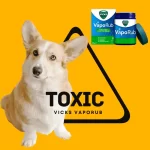Can Dogs Smell Molly
Unleashing the Truth: Can Dogs Smell Molly?
When it comes to illicit drugs, dogs are often trained to sniff out contraband like marijuana, cocaine, and heroin. But what about a newer and less well-known substance called molly? Can dogs detect this synthetic stimulant that has been linked to rave culture and electronic dance music (EDM) events? In this article, we will explore the science, myths, and controversies surrounding the ability of dogs to smell molly.
What Is Molly?
Before we delve into the canine nose, let’s clarify what molly actually is. Molly is a slang term for MDMA (3,4-methylenedioxymethamphetamine), a psychoactive drug that alters mood and perception by increasing the levels of serotonin, dopamine, and norepinephrine in the brain. MDMA was first synthesized in 1912 by a German pharmaceutical company but only became popular as a recreational drug in the 1980s and 1990s. Molly refers specifically to MDMA in its pure crystalline form or capsules/pills that allegedly contain pure MDMA. However, most molly sold on the street is not pure and may contain other substances such as methamphetamine, caffeine, bath salts, or even fentanyl that can be deadly.
Why Would Dogs Smell Molly?
Now that we know what molly is, why would dogs be trained to detect it? The answer lies in law enforcement efforts to combat drug trafficking and possession. Drug-sniffing dogs are commonly used by police officers at airports, borders, schools, concerts, and other public places where drugs may be concealed or transported. These dogs are usually trained to recognize the odor of certain chemicals that are precursors or byproducts of illegal drugs. For example, dogs can detect the scent of cocaine hydrochloride which has a distinctive bitter odor due to its alkaloid nature. However, MDMA itself does not have a strong odor and is usually mixed with other substances that may mask its smell. Therefore, dogs may not be able to directly sniff out molly but rather alert their handlers to the presence of something suspicious that could lead to further investigation.
What Does Science Say About Dogs Smelling Molly?
Despite the lack of direct evidence, some studies suggest that dogs can indeed detect molly. For instance, a 2014 study published in Forensic Science International tested the ability of drug-sniffing dogs to identify various forms of MDMA. The researchers found that trained dogs could reliably discriminate between blank samples, negative controls, and positive samples of pure MDMA, impure MDMA, and other drugs such as cocaine and amphetamine. However, the study did not address the sensitivity or specificity of the dogs’ responses nor did it investigate how well the dogs could distinguish molly from other similar substances.
Another study published in Journal of Analytical Toxicology in 2017 examined whether trained dogs could distinguish between ecstasy tablets containing different amounts of MDMA. The researchers concluded that dogs were able to differentiate high-MDMA tablets from low-MDMA tablets but not from placebo ones. However, this study used only six dogs and did not control for confounding factors such as handler bias or environmental cues.
Therefore, the scientific evidence regarding dogs’ ability to smell molly is limited and inconclusive. More research is needed to determine whether dogs can effectively detect molly in real-world scenarios and under different conditions.
What Are Some Myths About Dogs Smelling Molly?
As with many topics related to drugs and animals, there are also many myths and misconceptions about dogs’ ability to smell molly. Here are some examples:
– Myth #1: Dogs can smell every molecule of molly even if it’s wrapped in multiple layers of plastic or hidden inside electronic devices.
Reality: Dogs rely on volatile molecules that emanate from a substance, not on its physical appearance or packaging. Therefore, if molly is sealed in airtight containers or shielded by non-porous materials, it may be harder for dogs to smell it. However, some dogs are trained to alert on the odor of hidden drugs even if they cannot see or touch them directly.
– Myth #2: Dogs can detect molly only if it’s in powder form and not in pills.
Reality: The form of molly does not necessarily affect its scent profile or volatility. Dogs can detect the odor of powders, liquids, gels, and solids as long as they contain the relevant molecules that dogs have been trained to recognize. In fact, some studies suggest that dogs may be better at detecting MDMA in pill form than in powder form due to the different chemical composition and release profile.
– Myth #3: Dogs can’t smell molly because it’s too new or too rare.
Reality: Dogs do not discriminate between old and new drugs, legal or illegal drugs, common or uncommon drugs. They only respond to the specific odors they have been taught to associate with a reward (e.g., food, toy). Therefore, if enough dogs are trained to detect molly and rewarded for doing so, they can easily pick up its scent regardless of how novel or scarce it is.
What Are Some Controversies About Dogs Smelling Molly?
Apart from the scientific and mythological aspects of dogs’ olfactory prowess, there are also ethical and legal issues surrounding their use as drug detectors. Here are some examples:
– Controversy #1: Dogs may give false alerts based on their handlers’ biases or cues.
Reality: Dogs are highly sensitive to subtle changes in human behavior and body language. Therefore, if their handlers expect them to find something or unconsciously signal them where to search, the dogs may respond accordingly even if there is no actual drug present. This phenomenon is called the Clever Hans effect and has been documented in various contexts including drug detection. To minimize this risk, handlers should be trained to be blind to the location and identity of the searched items and use multiple dogs or confirmatory tests.
– Controversy #2: Dogs may violate people’s privacy and civil rights by alerting on innocent substances or persons.
Reality: Dogs are not infallible nor omniscient. They can make mistakes, have false positives or negatives, or be influenced by extraneous factors such as ambient odors or distractions. Therefore, a positive alert from a dog does not necessarily indicate the presence of drugs or criminal activity but rather a signal for further investigation. However, some critics argue that using dogs to search for drugs without probable cause or reasonable suspicion violates the Fourth Amendment of the US Constitution which protects against unreasonable searches and seizures. Furthermore, some people may suffer from anxiety, embarrassment, or harm if they are subjected to dog searches in public places without consent or justification.
– Controversy #3: Dogs may be exposed to health risks and poor welfare due to their work conditions and training methods.
Reality: Dogs that are used as drug detectors often undergo intensive training that involves exposure to controlled amounts of drugs in order to establish reliable responses. This process can be stressful, aversive, or even harmful if not done properly. Moreover, dogs that work in noisy, crowded, or hazardous environments may experience physical exhaustion, dehydration, or injury. Therefore, it is important for handlers and trainers to provide adequate care, rest, and medical attention to their canine colleagues and avoid using punitive or coercive methods.
Conclusion
Can dogs smell molly? The answer is not straightforward nor definitive. While some studies suggest that dogs can detect MDMA in various forms and concentrations, there is still insufficient evidence to support their reliable use as molly detectors in real-world settings. Moreover, there are many myths and controversies surrounding the use of dogs as drug detectors that raise ethical, legal, and welfare concerns. As with any animal-assisted activity or intervention, it is crucial to balance the potential benefits with the potential harms and to continuously evaluate and improve the methods and outcomes.



